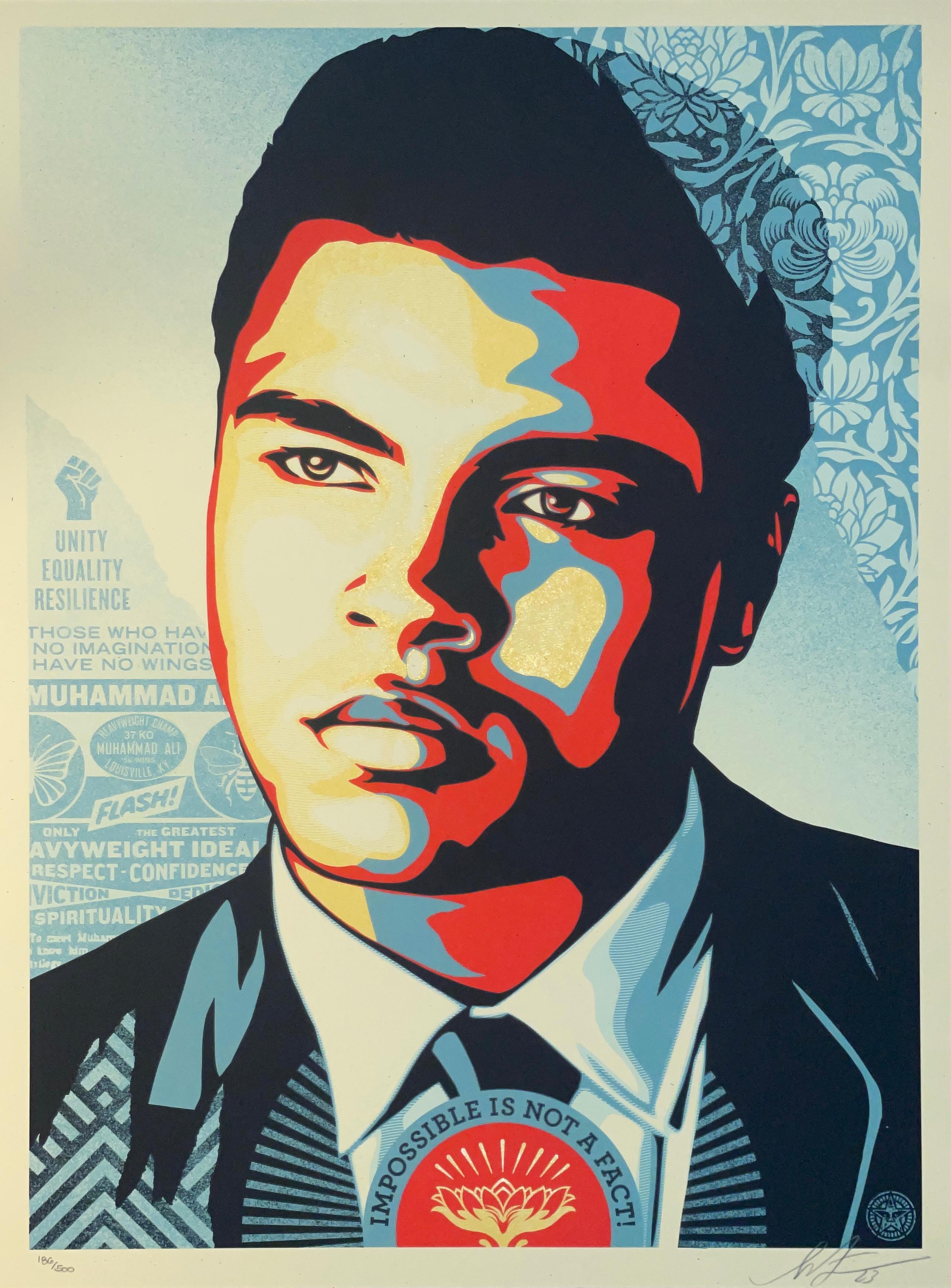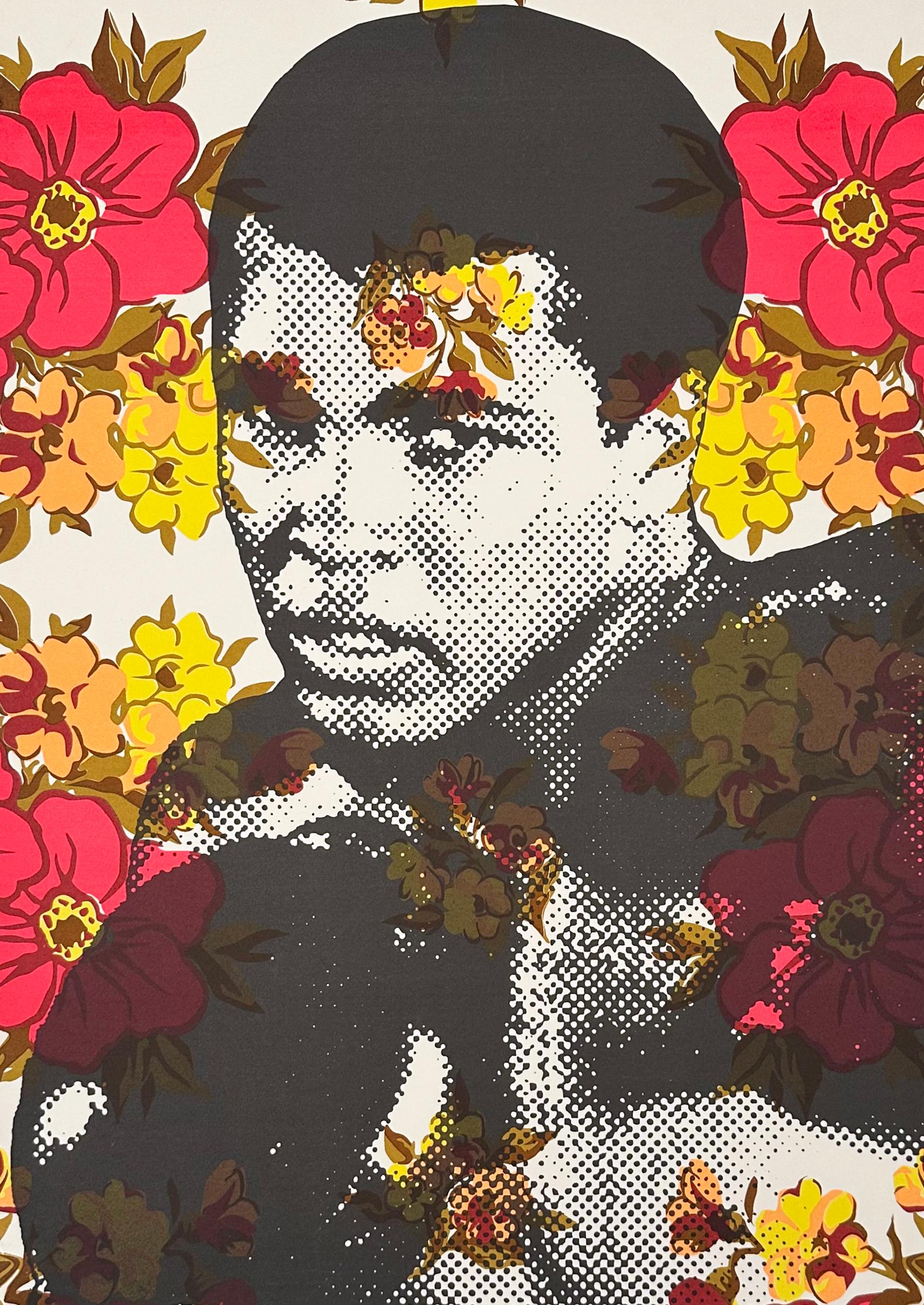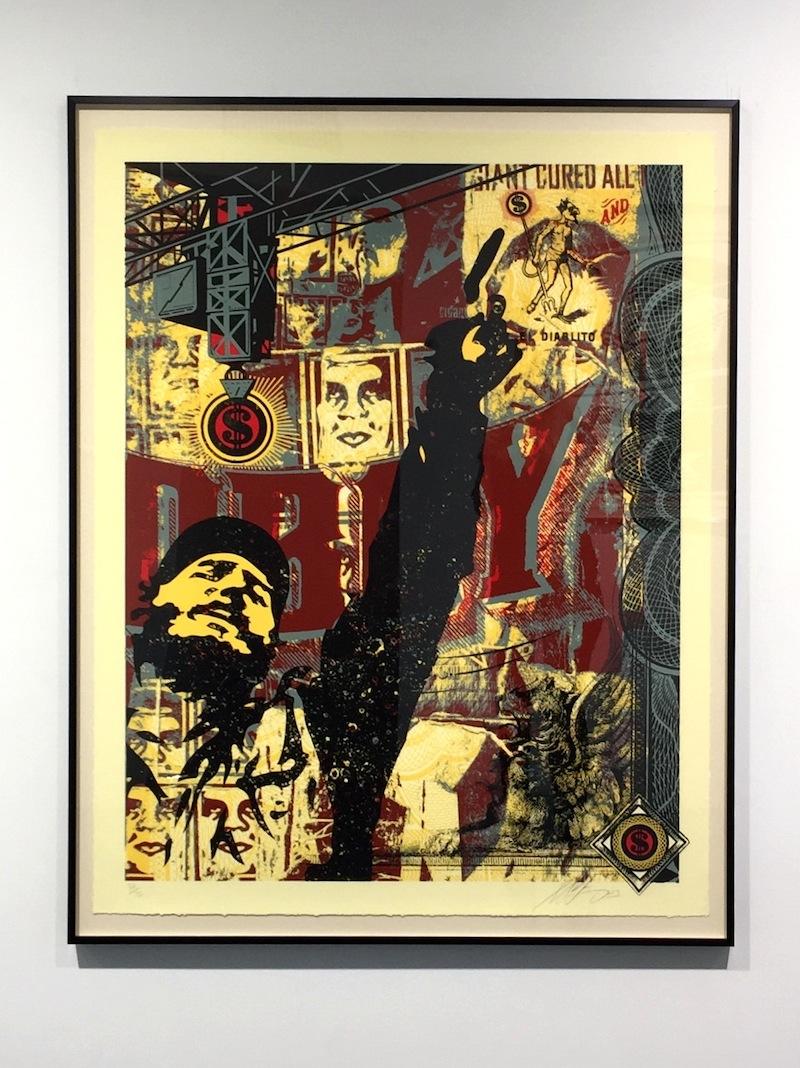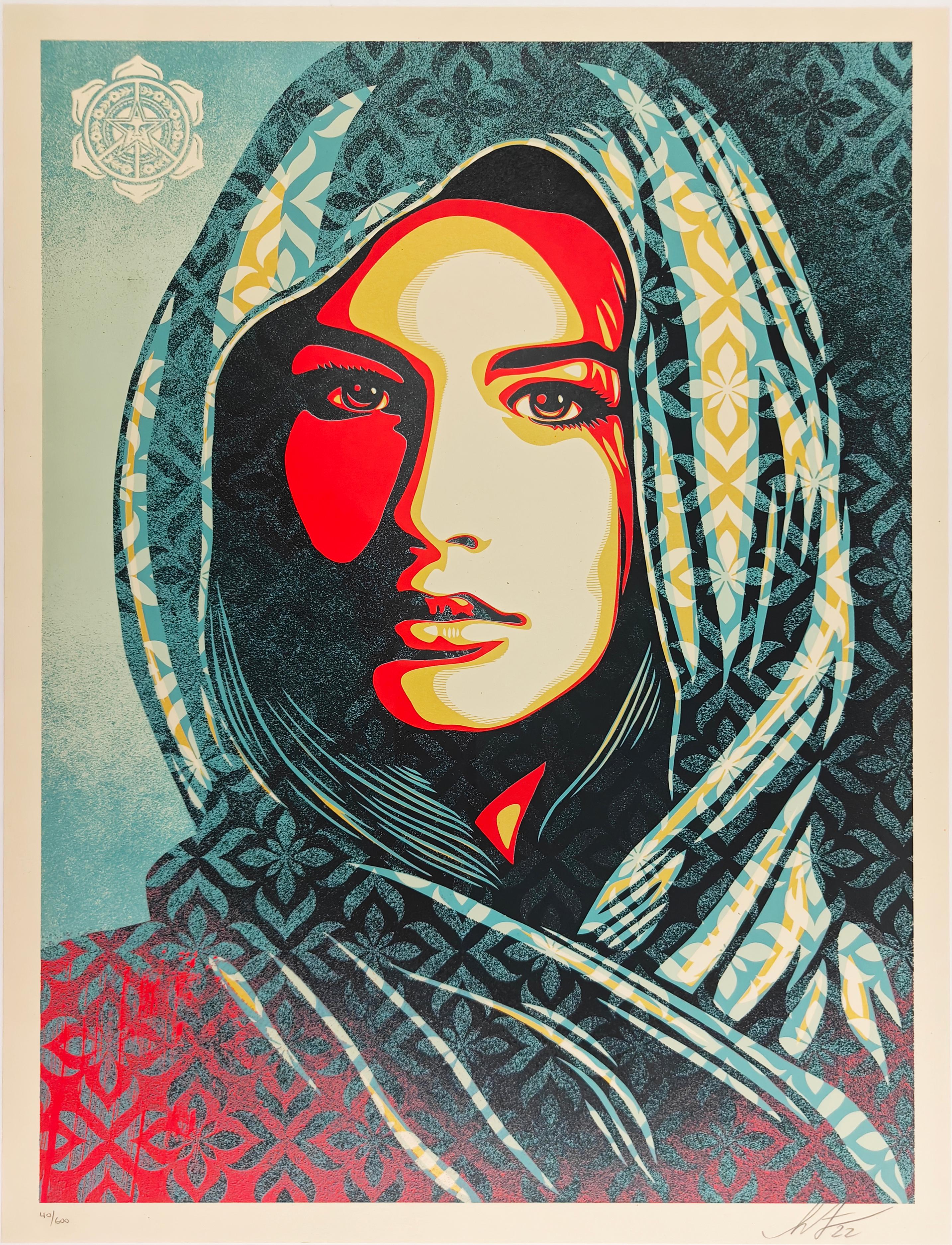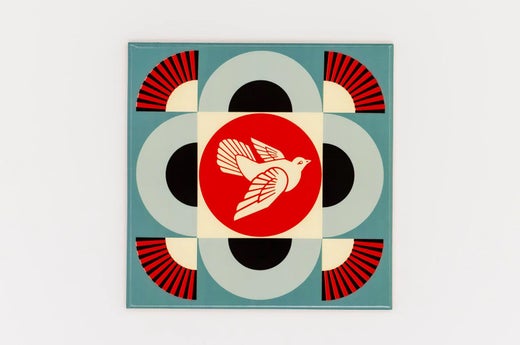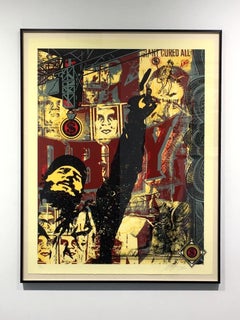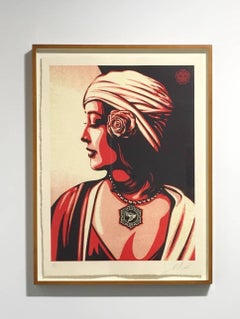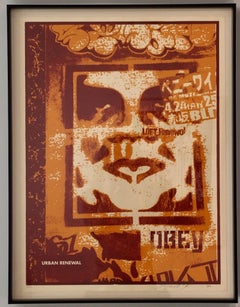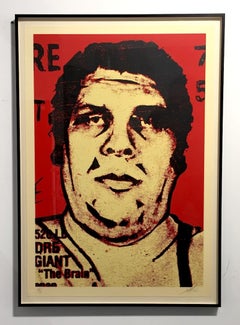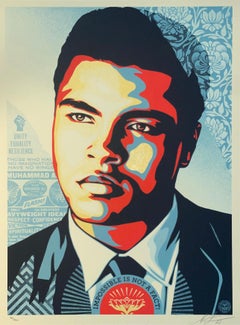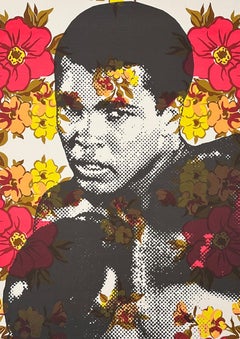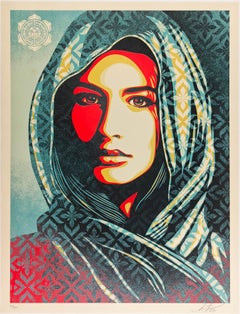TECHNICAL INFORMATION:
Shepard Fairey
Ali Canvas
2010
Screenprint
24 x 18 in.
Edition 229 of 450
Pencil signed and numbered
Condition: The corners are crisp, the edges are perfect and the pieces as no issues of any kind.
Frame: The frame is a thin black aluminum frame with plexi glass, that perfectly shows the margins and the corners of the print and goes perfectly with the piece.
ABOUT THIS WORK:
This is a very well thought out portrait choice by Shepard Fairey.
Muhammad Ali is an embodiment of an inspiring human spirit that triumphed over great odds. His dogged tenacity led him to three heavyweight titles. He also has a charismatic personality who influenced more than boxing. Ali was a conscientious objector to the Vietnam War.
This is a print that Shepard Fairey calls Canvas, because in the image, you can actually see the look typical of a Shepard Fairey painting or an HPM (Hand-Painted Multiple).
The background seem as if there are different layers formed by collage elements and brush strokes, but in actuality, this work is entirely screen printed.
It is a beautiful sincere memory of boxer and icon Muhammad Ali.
ABOUT THE ARTIST:
Frank Shepard Fairey (born February 15, 1970) is an American contemporary graphic designer and illustrator who emerged from the skateboarding scene. He first became known for his "Andre the Giant Has a Posse" (OBEY) sticker campaign, in 1989, while attending the Rhode Island School of Design (RISD). As with most street artists, the Obey Giant was intended to inspire curiosity and cause the masses to question their relationship with their surroundings.
The sticker has no meaning but exists only to cause people to react, to contemplate and search for a meaning in the sticker. Those who are familiar with the sticker simply find humor and enjoyment from its presence. Those who actually try to look deeper into its meaning only burden themselves and often end up condemning the art as an act of vandalism from an evil, underground cult.
In a manifesto he wrote in 1990, and since posted on his website, he links his work with Heidegger's concept of phenomenology. “When I started to see reactions and consider the sociological forces at work surrounding the use of public space and the insertion of a very eye-catching but ambiguous image, I began to think there was the potential to create a phenomenon.”
His work became more widely known in the 2008 U.S. presidential election, specifically his Barack Obama "Hope" poster. The New Yorker art critic Peter Schjeldahl called the poster "the most efficacious American political illustration since 'Uncle Sam Wants You'".
Fairey's first art museum exhibition, titled "Supply & Demand" like his earlier book, was in Boston at the Institute of Contemporary Art in the summer of 2009. The exhibition featured over 250 works in a wide variety of media: screen prints, stencils, stickers, rubylith illustrations, collages, and works on wood, metal and canvas. As a complement to the ICA exhibition, Fairey created public art works around Boston. The artist explains his driving motivation: “The real message behind most of my work is 'question everything'”.
On his way to the premiere of his show at the Institute of Contemporary Art, Fairey was arrested on two outstanding warrants related to graffiti. He was charged with damage to property for having postered two Boston area locations with graffiti, a Boston Police Department spokesman said. His arrest was announced to party goers by longtime friend Z-Trip who had been performing at the ICA premiere at Shepard Fairey's request.
The Institute of Contemporary Art, Boston calls him one of today's best known and most influential street artists. His work is included in the collections at The Smithsonian, the Los Angeles County Museum of Art, the Museum of Modern Art in New York, the Museum of Contemporary Art San Diego, the National Portrait Gallery in Washington, the Virginia Museum of Fine Art in Richmond, and the Victoria and Albert Museum in London.
In 2011 Time Magazine commissioned Fairey to design its cover to honor "The Protester" as Person of the Year in the wake of the Arab Spring, Occupy Wall Street and other social movements around the world. This was Fairey's second Person of the Year cover for Time, his first being of Barack Obama in 2008.
